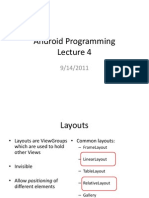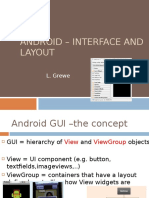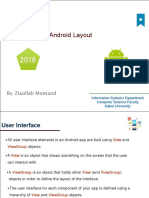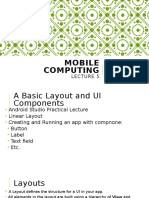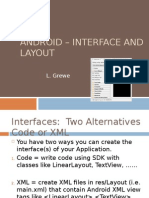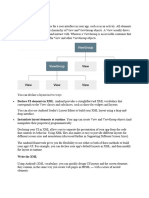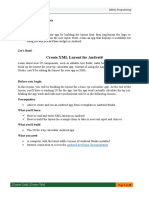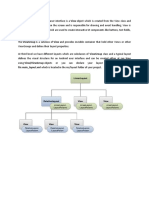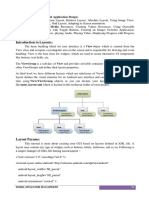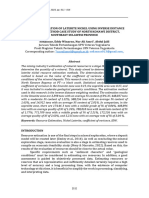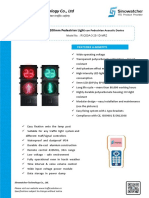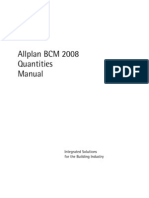0% found this document useful (0 votes)
19 views2 pagesExample: Two Buttons (Child Elements) Inside A Linear Layout (Viewgroup) With Horizontal Orientation Will Be Placed Horizontally Beside Each Other
XML (eXtensible Markup Language) is used in Android to define the user interface of applications, allowing for separation of design and logic. It enables the creation of layouts adaptable to various devices and languages without altering source code. XML elements can be categorized as childless or with child nodes, each having multiple properties for customization.
Uploaded by
ewnetdbuCopyright
© © All Rights Reserved
We take content rights seriously. If you suspect this is your content, claim it here.
Available Formats
Download as PDF, TXT or read online on Scribd
0% found this document useful (0 votes)
19 views2 pagesExample: Two Buttons (Child Elements) Inside A Linear Layout (Viewgroup) With Horizontal Orientation Will Be Placed Horizontally Beside Each Other
XML (eXtensible Markup Language) is used in Android to define the user interface of applications, allowing for separation of design and logic. It enables the creation of layouts adaptable to various devices and languages without altering source code. XML elements can be categorized as childless or with child nodes, each having multiple properties for customization.
Uploaded by
ewnetdbuCopyright
© © All Rights Reserved
We take content rights seriously. If you suspect this is your content, claim it here.
Available Formats
Download as PDF, TXT or read online on Scribd
/ 2



